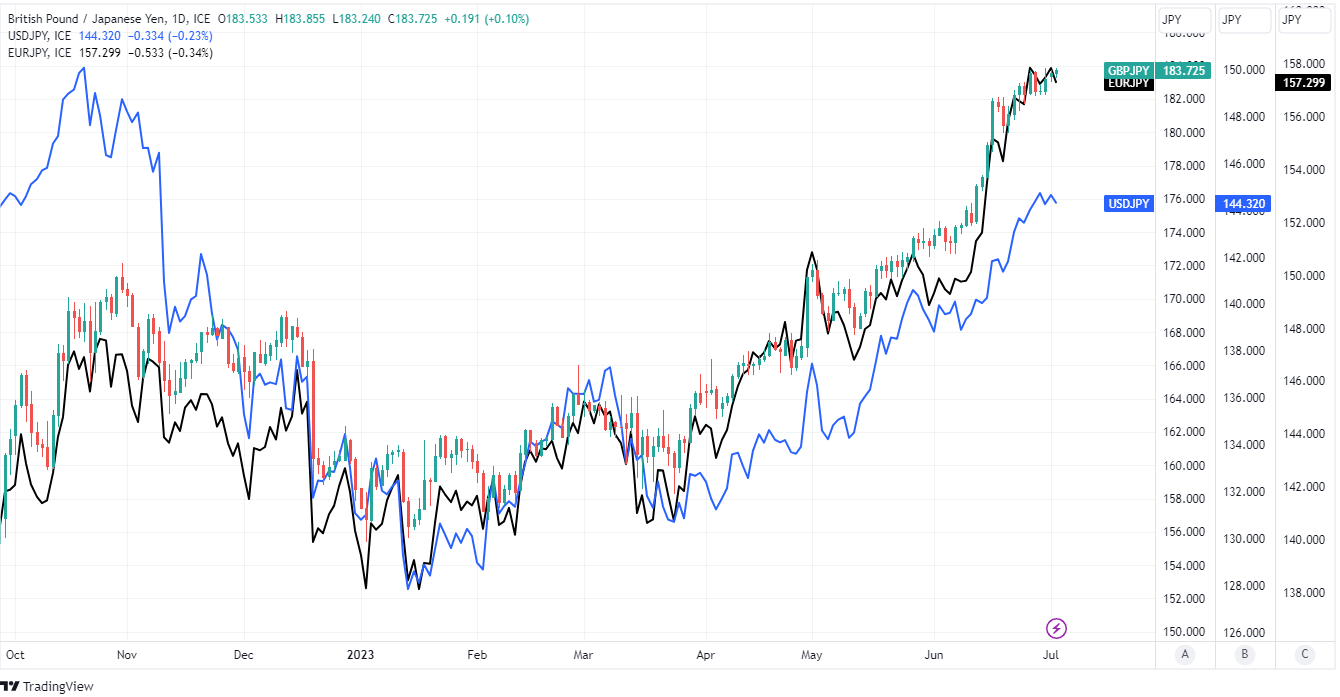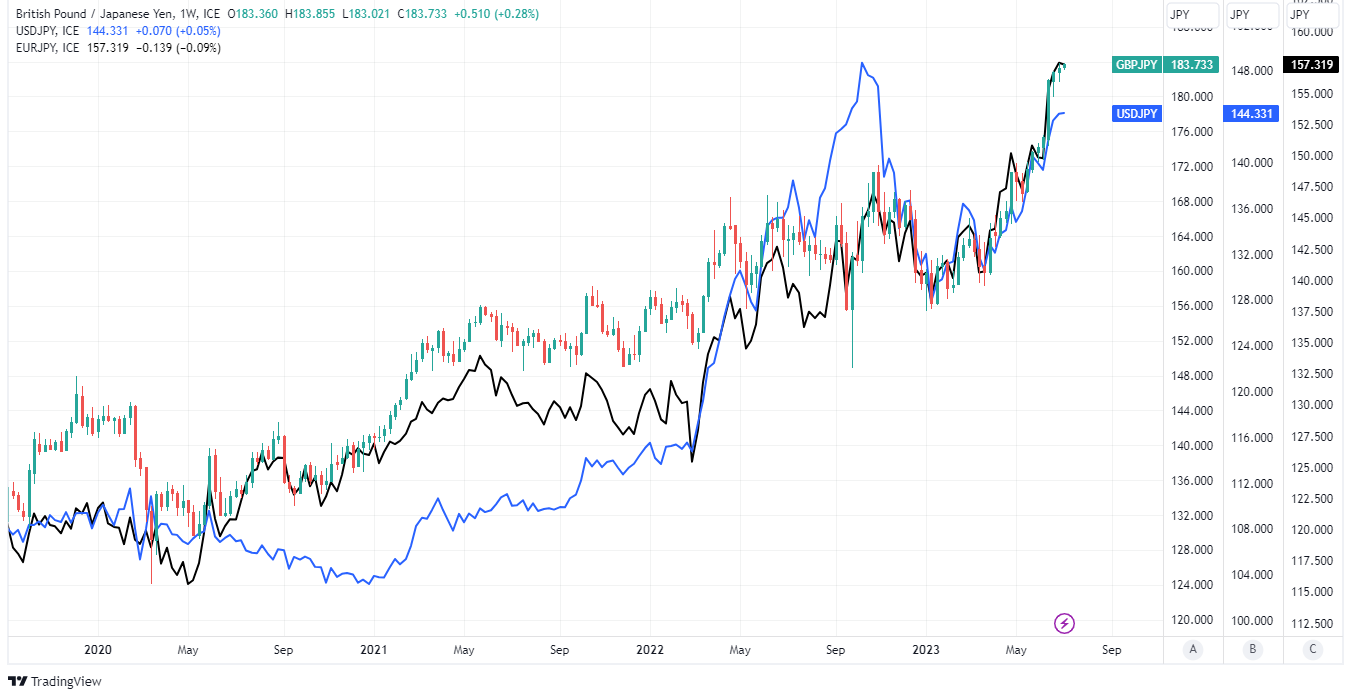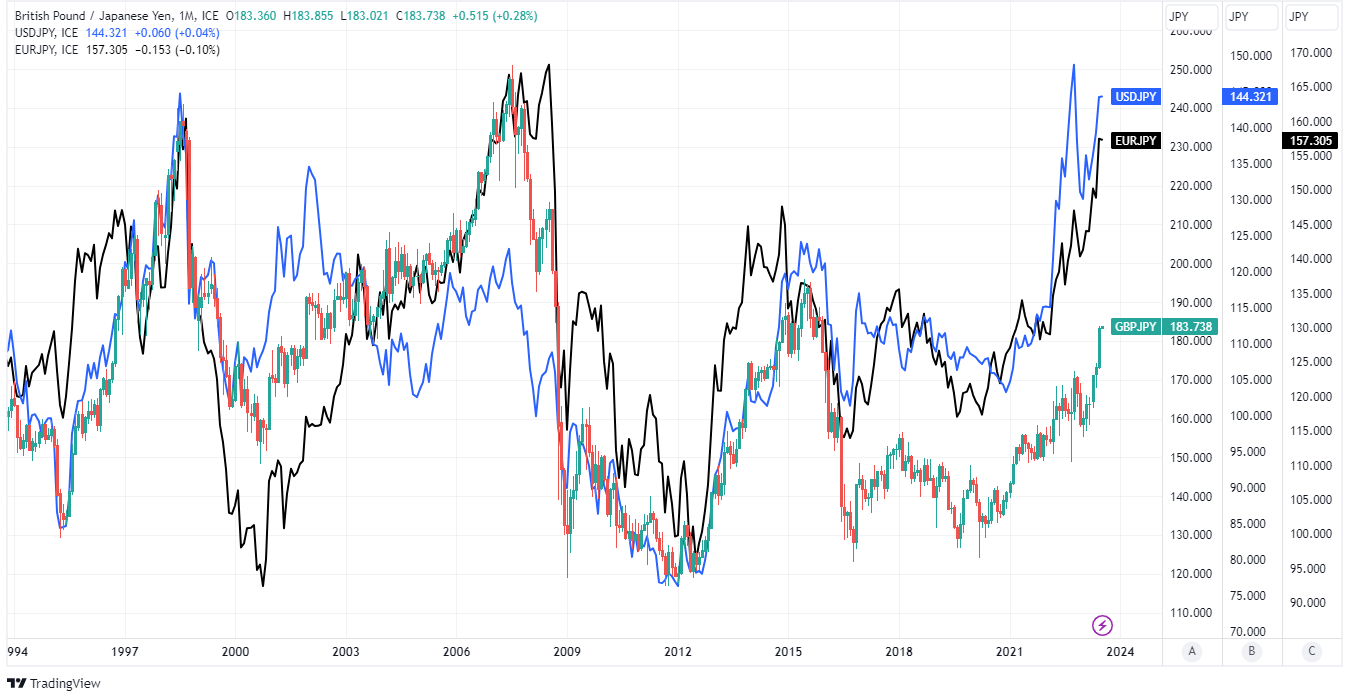Japanese Yen Has Most to Gain in EUR/JPY and GBP/JPY if BoJ Squashes Carry Trade
"I’m not suggesting this setup is similar; I’m just waxing nostalgic" - Spectra Markets.

Image © Adobe Stock
The Japanese Yen stabilised against the Pound, Dollar, Euro and others in opening the new month but remained near landmark lows and would likely have most to gain from the single currency and Sterling if a recently popular 'carry trade' leads to another lurch lower currency and intervention to support it from Tokyo
Japan's Yen was close to being the worst-performing major currency of the recent month and the current year on Tuesday when the Russian Rouble was the only G20 currency to have fallen more widely for either period while the Pound, Euro, Swiss Franc and Norwegian Krone ranked among the outperformers.
"One possible trigger would be JPY intervention, which would squash the carry junky market and send EUR/JPY and GBP/JPY sharply lower," says Brad Bechtel, global head of FX at Jefferies, in reference to a bullish forecast for the U.S. Dollar Index.
"But barring that we'll likely see the EUR/USD and GBP/USD continue to grind lower as their central banks remain behind the curve on inflation with cooling growth," Bechtel writes in a Monday market commentary.
Bechtel says last month's sharp elevation in GBP/USD and EUR/USD has likely been at the expense of the Yen and carry trades involving GBP/JPY and EUR/JPY.
Above: GBP/JPY shown at daily intervals alongside EUR/JPY and USD/JPY.
The Yen has long been used as a funding currency by investors and traders wanting a low-cost means of financing investments in higher-yielding assets elsewhere.
Carry traders have tended to invest most commonly in emerging market economy assets and particularly over the most recent decade or so but sharp increases in advanced economy interest rates since late in the pandemic period have now seen other currencies become popular carry trades too.
Few, if any have been more popular than Pound Sterling and the Euro where interest rates have gone from near zero or below, to almost four percent in the case of the European Central Bank (ECB) and five percent at the Bank of England (BoE).
"It is notable that policymakers in Japan and China are simultaneously leaning against currency depreciation, albeit in very different ways. While neither currency is at the 2022 lows vs. USD, their respective trade-weighted exchange rates are perhaps driving some concern," says Adarsh Sinha, head of Asia Pacific FX strategy at BofA Global Research.
"Japan government officials have escalated their verbal rhetoric against yen depreciation over the past week. FX intervention may be on the cards if USD/JPY exceeds 145 and heads toward 150 with rising volatility," Sinha writes in a Friday research briefing.
Above: GBP/JPY shown at weekly intervals alongside EUR/JPY and USD/JPY.
Japanese borrowing costs are little changed when measured over the last year or more owing to a continued commitment to monetary easing by the Bank of Japan, which expressed scepticism about the sustainability of inflation in Japan as recently as June but didn't rule out further tweaks to the limits it imposes on government bond yields.
The BoJ policy has burnished the appeal of the Yen as a 'funding currency' while BoE and ECB monetary policies have placed the Euro and Pound on display alongside other prospective carry trade counterparties while exacerbating an almost three-year slide in the value of the Yen against many other currencies.
Verbal protests have been heard coming from the finance ministry since the most recent lurch lower began in June with some echoing those prior to earlier interventions carried out late last year when a rallying Dollar lifted USD/JPY to multi-decade highs.
"Short USDJPY has rarely been more expensive. Long USDJPY has rarely been so delicious," writes Brent Donnelly, CEO at Spectra Markets and a veteran currency trader with a career spent between hedge funds and global lenders like Nomura and HSBC, in Monday's am/FX daily macro newsletter.
"The last time it was this delicious, Long-Term Capital Management was doing backflips but ended up landing in an empty swimming pool as MOF and Federal Reserve USDJPY selling intervention absolutely bludgeoned it from 148 to 112 in two months. I’m not suggesting this setup is similar; I’m just waxing nostalgic," he adds.
Above: GBP/JPY shown at monthly intervals alongside EUR/JPY and USD/JPY.



